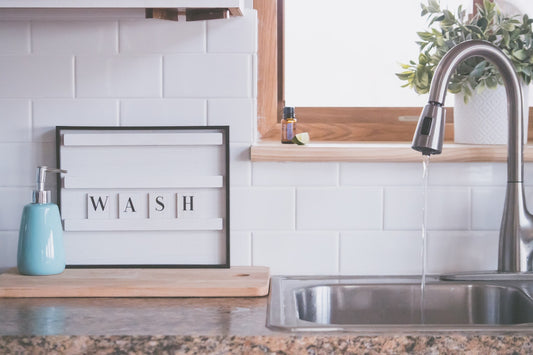Hard water has multiple unpleasant effects such as dull clothes and deposits on utensils and hardware. You may have also noticed that it causes a certain scale build up on fixtures and in pipes. Water softeners are a popular solution to these issues as they reduce the hardness level of water. They are very effective at increasing the longevity of appliances like water heaters and dishwashers. This eventually saves energy, water and the amount of detergent used.
While softeners have notable benefits, salt-based water softeners also have some major drawbacks. The traditional salt-based water softeners are not environmentally friendly and can have adverse effects on our surroundings. They do improve the lives of homeowners but at a cost to the environment. This is why it is becoming a worldwide concern with the passage of time. Not to mention, several states and municipalities are banning the installation of salt-based ion-exchanging water softeners. But why is that?
Let’s have a look at water softening systems.
How do Water softeners work?
There are some hard water minerals that switch places with sodium ions. This switching of places takes place through the process of ion exchange. The hard water minerals, namely magnesium and calcium ions, are replaced by sodium ions present in the water softeners. The entire process of ion exchange employed by water softeners takes place in a resin tank or chamber.
There are polymeric resins present in the tank that release sodium ions as water passes through it. On the other hand, the magnesium and calcium ions bind to the resin structure. Once this entire process takes place, the water turns into soft water and leaves the tank through pipe fittings. The cycle is repeated as more hard water enters the tank and exits in its newer and softer form.
How are Water Softeners bad for the Environment?
The issue with water softeners is simple and clear: they add a lot of salt to the environment. That ultimately affects the environment negatively. Read on to learn about these effects.
1. Salt build up in plants
Mostly, water softeners are used to soften the water used in your house. While this may seem good for multiple reasons, have you thought about your home garden? If you water your plants with the same soft water, the salt will eventually build up to the point where it will kill your plants. And if you live in a region with less precipitation, the risk gets even bigger as your plants will receive no rain for dilution.
Softened water does not only negatively impact the plants in your own house, but the harm goes beyond your square footage. It is also an endangering factor for the local parks and crops in your area. When you use this water in your daily routine while showering or doing the dishes, the water can enter your city’s water source.
2. Substantial waste
Salt-based softeners are very effective at eliminating hard water but they are not as efficient. The average rate of water that they waste is about 150 gallons per week, which makes up for 7800 gallons every year. For this reason, community water supplies fall under a huge burden as the monthly water supplies keep increasing.
3. Aquatic build up
Salt-based water softeners release chloride salts in forms such as sodium chloride ions into the environment. This causes a negative effect on the surroundings as salt can build up in aquatic environments like aquifers, streams and rivers. It can have a catastrophic effect on marine life. This is especially true for areas that already suffer from high salt concentrations due to things like agricultural runoff and road salt application.
4. Salt Discharge
Water softeners add sodium ions to the water while sodium chloride ions are added to the drainage system at the same time. This chloride seeps into and pollutes groundwater from sewage systems. Oftentimes, it can also adversely affect the environment via facilities that treat waste water.
5. Major pollutant
Salt is considered a pollutant for the same reasons that you use water softeners for. Saline or hard water reduces the effectiveness of soaps and detergents and causes scaling that make water-heating appliances less energy-efficient. Not to forget, even plumbing and other home appliances wear out faster.
However, that is not all that water does when its salinity or hardness increases. The chloride ions can also damage agricultural crops and harm aquatic life. And, when chloride content is in excess, it can also reduce the reusability rate of treated waste water. Similarly, when treated water is discharged into surface waters such as rivers, using it for irrigation could lead to undesirable results.
What can you do instead?
If you wish to take another step at living an eco-friendly lifestyle, you may want to eliminate the use of ion exchange water softeners. Here are a few alternatives that you can opt for and ditch harmful water softeners.
1. Salt-free Conditioning System
While these types of systems do not remove magnesium or calcium from the water, they are helpful at precipitating them into tiny particles. Water passes through these systems and the catalysts present in them do the work. As a result, water does not feel hard anymore even when the minerals are still present.
2. Anti-scale Magnetic Treatment
This system allows hard water to pass through a magnetic field. This in turn reduces the effects that water hardness normally leads to.
Conclusion
Water softening systems were originally designed to reduce the amount of dissolved minerals in hard water. However, the exchange of ions that takes place during the softening process can be quite harmful for the environment.






